The Yucatan Peninsula
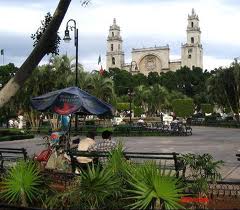
The Yucatan Peninsula, located in southeastern Mexico between the Gulf of Mexico and the Caribbean Sea, has a year-round hot and humid climate, which is ideal for enjoying its Beach Resorts and natural paradises.
The region, which comprises the states of Campeche, Yucatan and Quintana Roo, is well known for its numerous Mayan archeological sites. Many of the ancient traditions of the Mayas persist, for example, many women wear a traditional blouse called a huipil, and some homes are still built with straw rooftops. There are also the regional henequen haciendas, many of which have been converted into posh hotels. And then there are the blue waters of the Caribbean Sea that wash onto white-sand beaches, where you’ll find world-class hotels.
You can also visit Mexico’s hidden treasure, Campeche, a historic fortified city declared a World Heritage site. Nearby Campeche are archeological zones Edzna and Calakmul, the latter forming part of the biggest biosphere reserve in the country.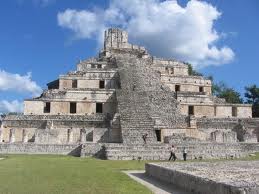
Located in the state of Quintana Roo is Cancun, a bustling tourist destination with luxurious hotels and nonstop nightlife. Also in Quintana Roo is the Mayan Riviera, where you’ll find nature parks Xcaret, Xel-Ha and biosphere reserve Sian Ka’an. Finally, the state offers the islands of Cozumel and Isla Mujeres, located several kilometers away from the Great Mayan Reef, the second largest reef in the world and an underwater paradise for scuba diving.
For more information about Cancun and the Riviera Maya, please visit their coresponding pages by following those links.
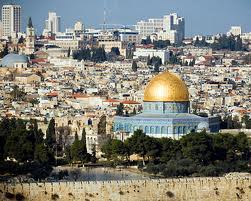 Just two hours away from Campeche is Merida, the so-called white city, where the local cuisine is unbeatable and a stroll down Paseo Montejo Avenue allows you to appreciate the city’s most important historical buildings. Nearby, in the heart of a cenotes zone (cenotes are sink holes, or fresh water pools connecting to submerged caverns), you’ll find the most cherished sites of the Mayan world: Chichen Itza and Uxmal.
Just two hours away from Campeche is Merida, the so-called white city, where the local cuisine is unbeatable and a stroll down Paseo Montejo Avenue allows you to appreciate the city’s most important historical buildings. Nearby, in the heart of a cenotes zone (cenotes are sink holes, or fresh water pools connecting to submerged caverns), you’ll find the most cherished sites of the Mayan world: Chichen Itza and Uxmal.
The charming and magical city of Merida is located in the state of Yucatan, about 177 km (110 mi) from Campeche and 320 km (198 mi) from Cancun. Thanks to its tropical climate and cool winds that blow in from the nearby coast, temperatures range between 28º and 35º C (82º and 95º F) throughout most of the year.
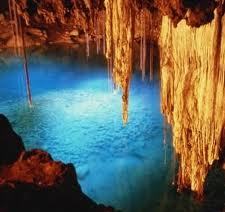 Founded upon the ruins of the Mayan city T’ho, which was constructed with white limestone and means “Face of Infinity,” Merida is known today as the White City. It has beautiful and solidly built colonial buildings that house the city’s history, art, traditions and culture. In the downtown Historic Center, you can visit the city cathedral, an impressive 16th century construction. Or you can go to interesting museums, such as the Yucatan Museum of Archaeology, which you’ll find in Palacio Canton, an elegant building dating back to the Porfirian era. You can also take a ride in a horse-drawn carriage down the city’s main avenue, Paseo Montejo, which is lined with 19th century mansions and well-known hotels. It’s a pleasant tour blending sights of old and new.
Founded upon the ruins of the Mayan city T’ho, which was constructed with white limestone and means “Face of Infinity,” Merida is known today as the White City. It has beautiful and solidly built colonial buildings that house the city’s history, art, traditions and culture. In the downtown Historic Center, you can visit the city cathedral, an impressive 16th century construction. Or you can go to interesting museums, such as the Yucatan Museum of Archaeology, which you’ll find in Palacio Canton, an elegant building dating back to the Porfirian era. You can also take a ride in a horse-drawn carriage down the city’s main avenue, Paseo Montejo, which is lined with 19th century mansions and well-known hotels. It’s a pleasant tour blending sights of old and new.
While in Merida, you can try many of the exquisite dishes characteristic of Yucatecan cuisine. Papadzules and panuchos are made with stuffed corn tortillas and bathed in hot sauce. The traditional cochinita pibil is pork marinated in orange juice and served with beans and red onion.
You can also use Merida as a base to visit old henequen haciendas just several kilometers outside of the city. Many of them have been converted into luxurious hotels. As part of the exciting tour of Merida’s environs, you can check out some amazing cenotes (sinkholes) in underground river systems and you can take in beautiful natural scenery at the Reserva de la Biosfera Ria Celestun, a biosphere reserve and habitat of hundreds of pink flamingos. Also near the White City are many spectacular archaeological zones where you can discover the grandeur of the ancient Mayan culture at sites such as Uxmal, Dibilchaltun and Chichen Itza.
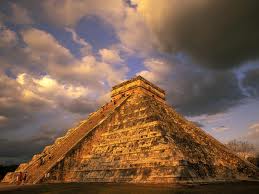 Chichen Itza (voted one of the new 7 wonders of the world)
Chichen Itza (voted one of the new 7 wonders of the world)
The ancient Mayan capital of Chichen Itza is an archaeological zone in the eastern region of the state of Yucatan. It lies 120 km (74 mi) east of Merida on Highway 180, in the direction of Cancun. The climate is hot and dry, with an average temperature of 34º C (93º F).
This place, declared a World Heritage Site by the UNESCO, will take you back in time to the pre-Hispanic era as you discover the secrets awaiting you in the most important structures. At El Castillo (also known as the of Pyramid of Kukulcan), a natural phenomenon occurs each year during the spring equinox: the sunlight creates a shadow image of a plumed serpent descending down the pyramid’s stairs. This unique experience draws hundreds of tourists from all over the world. Another important structure is the Juego de Pelota, the largest ball court in Mesoamerica. It measures 168 meters (554 feet) in length and 70 meters (231 feet) in width. There’s also the Observatorio (Observatory), or Caracol (Snail), called that because of the interior’s round spiral shape.
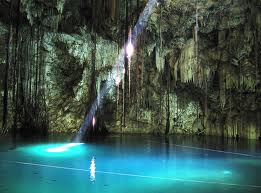 At Chichen Itza you can also visit the spectacular Cenote Sagrado, a large sinkhole that measures 60 meters (198 feet) in diameter. Many fantastic treasures have been found at the sinkhole: rings, necklaces, gold and jade objects, as well as the bones of young women that were thrown into the water as an offering to Chaac, the Mayan rain god.
At Chichen Itza you can also visit the spectacular Cenote Sagrado, a large sinkhole that measures 60 meters (198 feet) in diameter. Many fantastic treasures have been found at the sinkhole: rings, necklaces, gold and jade objects, as well as the bones of young women that were thrown into the water as an offering to Chaac, the Mayan rain god.
Chichen Itza is an ideal destination, not only for those who enjoy archaeology, but also for those who like history and the charming allure of ancient civilizations.
Progreso is a port city in the Mexican state of Yucatán, located on the Gulf of Mexico in the north-west of the state some 30 minutes north of state capital Mérida (the biggest city on the Yucatán Peninsula) by highway. As of the Mexican census of 2005, Progreso had an official population of 35,519 inhabitants, the fifth-largest community in the state in population. The city is also the municipal seat of the surrounding municipality of the same name. The municipality’s area is 270.10 km² (104.29 sq mi) and its population at the census was 49,454 inhabitants. It includes Scorpion Reef with its five islets 130 km offshore (north) on the outer edge of Campeche Bank. Its largest other towns are Chicxulub, Campestre Flamboyanes, and Chelem.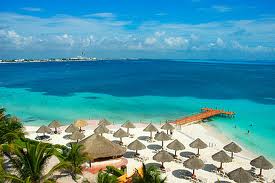
Progreso is a center for both the fishing industry and the container industry. All containers arrive in Progreso and are distributed to Yucatán, Campeche and Quintana Roo.
Progreso also is one of the newest ports for large cruise ships and an emerging balneario resort destination. Passengers disembark on a very long pier that juts out 6.5 km (4 miles) into the Gulf of Mexico. Passengers are taken to shore to visit Progreso, Mérida or the Maya civilization archaeological sites of Uxmal and Dzibilchaltun.
During the months of July and August the beaches fill with thousands of mostly local tourists, as it is traditional in these months for well-to-do residents of Mérida to leave the city and spend the summer in the cooler seaside environment.
Campeche
The city of Campeche, the capital of the state of Campeche, is located in the southern Gulf Coast region, 387 km (240 mi) northeast of Villahermosa, Tabasco, and 177 km (110 mi) southwest of Merida, Yucatan. The climate is tropical, with an average year-round temperature of 26º C (79º F). The city gets rainfall during the summer and autumn.
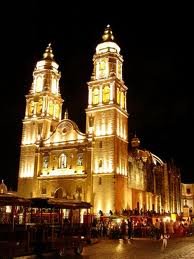 At this old commercial port, a giant wall still stands that once protected the city from pirate attacks in the 17th and 18th centuries. In this walled city, you’ll see two forts (one of which houses a museum), seven bulwarks and two main gates (the Sea Gate and Land Gate). Thanks to these monuments and the spectacular buildings in the Historic Center, such as the Cathedral and the Templo de Guadalupe, the UNESCO declared Campeche a World Heritage Site in 2002. Without question, Campeche has one of the most well preserved historic centers in the nation.
At this old commercial port, a giant wall still stands that once protected the city from pirate attacks in the 17th and 18th centuries. In this walled city, you’ll see two forts (one of which houses a museum), seven bulwarks and two main gates (the Sea Gate and Land Gate). Thanks to these monuments and the spectacular buildings in the Historic Center, such as the Cathedral and the Templo de Guadalupe, the UNESCO declared Campeche a World Heritage Site in 2002. Without question, Campeche has one of the most well preserved historic centers in the nation.
During your stay, we recommend that you visit the Museo de la Cultura Maya, housed in the San Miguel Fort, and the Museo de las Estelas Mayas, which exhibits regional art in the San Pedro Bulwark. At night, don’t miss the fascinating light and sound show at the Fort of San Jose El Alto. After the show, you can take a walk along the Historic Center’s cobblestone streets, where you’ll see a wide variety of stores, restaurants, bars and cafes. You can also take a stroll down the beautiful 3.5-km (2-mi) boardwalk, which leads to a tourist walkway, parks and a bicycle track.
In Campeche’s surrounding areas, you can enjoy an outdoor adventure at the Ria Celestun Biosphere Reserve, which is the habitat of hundreds of pink flamingoes. In addition, you can check out Calakmul, one of the largest biosphere reserves in the nation, which also has an interesting Mayan archaeological zone. Calakmul is a great spot to go camping, mountain biking and hiking.
During your visit to Campeche, don’t forget to try the tamales with chaya leaves and the pan de cazon (tortillas stuffed or layered with shark, beans and salsa), among other regional Mayan cuisine. For all that and much more, Campeche is an excellent destination to discover history, traditions and exciting adventures.
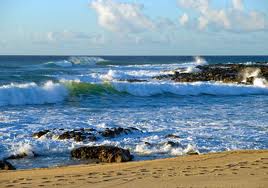 Holbox Island, one of the world’s natural beauties, is located on the northern tip of the Yucatán Peninsula, in the state of Quintana Roo, México and is part of an ecological reserve – the fauna and flora protection area “Yum Balam.” To the east lies Cabo Catoche, separated from the island by the beautiful Laguna Yalahau. Holbox island is 43 Km long and its white sand beaches are decorated with countless shells washed to the shore from the sea.
Holbox Island, one of the world’s natural beauties, is located on the northern tip of the Yucatán Peninsula, in the state of Quintana Roo, México and is part of an ecological reserve – the fauna and flora protection area “Yum Balam.” To the east lies Cabo Catoche, separated from the island by the beautiful Laguna Yalahau. Holbox island is 43 Km long and its white sand beaches are decorated with countless shells washed to the shore from the sea.
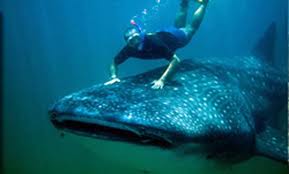 Holbox Island, has just one village, the tiny town of Holbox, where less than 1500 people live. It is a typical coastal village with sandy streets and wooden houses. Most of the people make their living from the sea. Fishing in Holbox Island is excellent and it is very common to catch grouper, bonitos and pargos of great size in its abundant waters. The island fishermen also dive to get lobsters and conch – island specialties.
Holbox Island, has just one village, the tiny town of Holbox, where less than 1500 people live. It is a typical coastal village with sandy streets and wooden houses. Most of the people make their living from the sea. Fishing in Holbox Island is excellent and it is very common to catch grouper, bonitos and pargos of great size in its abundant waters. The island fishermen also dive to get lobsters and conch – island specialties.
For more detailed information about the Yucatan, please click here.
To find out which resort or hotel will suit you best for your upcoming travel plans to the Yucatan, please send us an email or fill out the Contact Form on the right side of this page.



